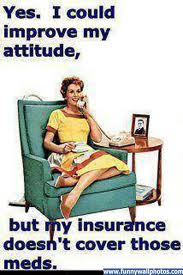WHY AND HOW DO PRESCRIPTION DISCOUNT CARDS WORK?
So here we are, one month into a new year and a new medical plan for many. Have you noticed any changes? Do you have a higher deductible or changes in coverage, co-pay amounts, prescription coverage? You may be in the market for prescription discount cards.
This happened to our family a few years ago with a prescription my husband needs to take for a hereditary acid reflux issue (Pantoprazole). Here is our personal story and how we used prescription discount cards to save $2190.
My husband was working for a health insurance company and, under his medical plan, the generic drug cost $10 per month co-pay. When he left to start his own company, he switched medical plans. The first time we went in for a refill under the new insurance, we were told it would be $125. What?
So, we called our new insurance provider thinking they might be trying to direct us to a less expensive brand or version of this drug. Sometimes, insurance providers have contracts with pharmaceutical companies for certain brands so they'll direct us to those OR they'll direct us to less expensive versions of a drug.
However, we learned that our new insurance company didn't cover ANY acid reflux drugs on this particular medical plan. Why wouldn't they cover one of the most highly prescribed drug categories? We realized the answer as soon as we asked it! This, of course, is one way insurance companies can cut costs. Then we wondered, “why do we have to pay the full retail rate and not get ANY kind of discount?” We learned that when an insurance company removes a drug from an insurance plan (also referred to as “taking it off formulary"), they don't typically pass on ANY of their negotiated discounts to the insured.

There we were, left to pay retail! It was at this point we remembered our prescription discount cards. We went to a website where we entered the prescription info (dosage, timing, etc.) and zip code. We found local pharmacies with prices ranging from $52 to $108 a month for this drug. Our local Walgreen's had it for $52. We never would have had access to this pricing without our prescription discount card.
Why the pricing difference, you ask? Great question!
There are companies called Pharmacy Benefit Managers (PBM) that negotiate drug pricing FROM each pharmaceutical company FOR each pharmacy.
Pharmaceutical company → PBM → Pharmacy
In other words, PBMs negotiate pricing on every drug at every pharmacy, so there are different prices EVERYWHERE. As is good business practice, pharmacies negotiate prices depending on their customer base. For instance, Pharmacy A might have a lot of soccer mom customers, so they charge less for Amoxicillin to get her in their door, but charge a lot for heart medication to re-coup the $ they lose on Amoxicillin. And, Pharmacy B might have a lot of retired/elderly customers, so they charge more for Amoxicillin and less for heart medication.
fb2.0_prescription_savings_blog_ad.jpg

Unfortunately, we (customers) have no idea how all this works and may continue going to our local pharmacy because "it’s convenient and we've always gone there." Or, we might think "I have a {insert big insurance company name here} medical plan so the price I get must be the lowest."
Let’s be honest….as Americans, we haven’t really been in control of our healthcare spending decisions. In the old days (before high deductibles), we didn’t know the price of healthcare stuff and frankly, we didn’t have to care because “insurance was paying for it.” We can find pricing on cars, electronics, clothing, food, etc., but the cost of blood pressure meds for a month? Who knows! And we certainly aren't aware we can shop for discounts on things like prescription drugs.
Bottom line: there are cracks in the pavement - in our medical insurance plans and in pharmaceutical pricing - and some drugs/patients fall through those cracks. A good prescription discount card offers consumers the ability to find out who has their drug for a lower price.
A prescription discount card is a good idea for your family if you have prescription(s): 1) that are expensive and only partially covered by your insurance; 2) that aren’t covered by your insurance; 3) but no insurance.
One note of caution: not all prescription discount cards are created equal! There are some that give weak discounts and at very few locations, so beware. Look for cards that offer 60,000+ locations and 35%+ discount (most average only 15-18% discount)!
In our case, we saved $2190 over the 2.5 years we had that medical plan! All because we had a prescription discount card and we were aware that we could be good consumers with this category of our spending!
If you need a quality prescription discount card (and other healthcare cost savers), check out https://www.freshbenies.com/service/prescription-savings to learn more.
Now, it’s your turn to tell us your story! Has this type of situation happened to you? What did you do about it?















